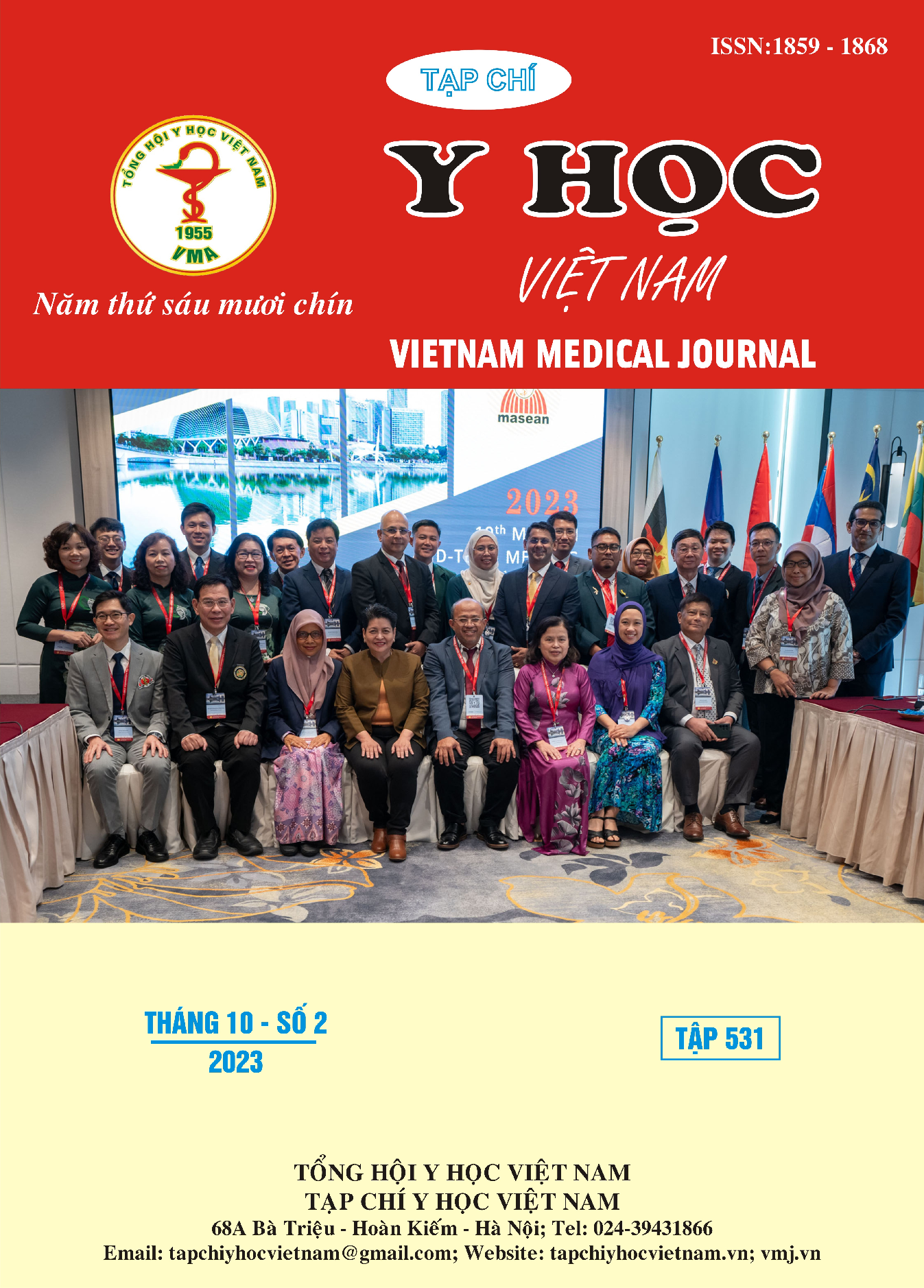TÁN SỎI THẬN QUA DA Ở TRẺ EM: NHÂN MỘT TRƯỜNG HỢP LÂM SÀNG
Nội dung chính của bài viết
Tóm tắt
Sỏi thận là một bệnh lý tiết niệu phổ biến và có thể gây ảnh hưởng đến bệnh nhân ở mọi lứa tuổi, bao gồm cả trẻ em. Tán sỏi thận qua da là một phẫu thuật xâm lấn tối thiểu đã được sử dụng thường quy trong điều trị sỏi thận với độ an toàn và tỷ lệ sạch sỏi cao. Chúng tôi báo cáo một trường hợp bệnh nhân nhi 2 tuổi được điều trị sỏi thận bằng phương pháp tán sỏi thận qua da tại bệnh viện E. Thông qua trường hợp này, chúng tôi ghi nhận tính hiệu quả và an toàn của phương pháp tán sỏi thận qua da trong điều trị sỏi thận ở trẻ em.
Chi tiết bài viết
Từ khóa
sỏi thận ở trẻ em, tán sỏi thận qua da, PCNL
Tài liệu tham khảo
1. Sas, David J, et al. Increasing incidence of kidney stones in children evaluated in the emergency department. The Journal of pediatrics. 2010; 157(1):132-137.
2. Sas, David J. An update on the changing epidemiology and metabolic risk factors in pediatric kidney stone disease. Clinical Journal of the American Society of Nephrology. 2011;6(8):2062-2068.
3. Habbig, Sandra, et al. Nephrocalcinosis and urolithiasis in children. Kidney international. 2011; 80(12):1278-1291.
4. Marra, Giuseppina, et al. Pediatric nephrolithiasis: a systematic approach from diagnosis to treatment. Journal of nephrology. 2019; 32:199-210.
5. Chung, Doo Yong, et al. Comparison of stone-free rates following shock wave lithotripsy, percutaneous nephrolithotomy, and retrograde intrarenal surgery for treatment of renal stones: A systematic review and network meta-analysis. PloS one. 2019;14(2):e0211316.
6. Mousavi-Bahar, Seyed Habibollah, et al. Percutaneous nephrolithotomy complications in 671 consecutive patients: a single-center experience. Urology journal. 2011;8(4):271-276.
7. Trần Quốc Hòa, Trịnh Nam Sơn. Tán sỏi thận qua da điều trị sỏi thận ở trẻ em nhân một trường hợp sỏi thận ở trẻ em . Tạp chí Y học Việt Nam. 2023; 523(2).
8. Türk, Christian, et al. EAU guidelines on interventional treatment for urolithiasis. European urology. 2016;69(3):475-482.
9. Ozden, Ender, Mercimek MN. Percutaneous nephrolithotomy in pediatric age group: Assessment of effectiveness and complications. World journal of nephrology. 2016; 5(1):84.
10. Cameron, Ann M, Sakhaee K, et al. Nephrolithiasis in children. Pediatric Nephrology. 2005; 20:1587-1592.
2. Sas, David J. An update on the changing epidemiology and metabolic risk factors in pediatric kidney stone disease. Clinical Journal of the American Society of Nephrology. 2011;6(8):2062-2068.
3. Habbig, Sandra, et al. Nephrocalcinosis and urolithiasis in children. Kidney international. 2011; 80(12):1278-1291.
4. Marra, Giuseppina, et al. Pediatric nephrolithiasis: a systematic approach from diagnosis to treatment. Journal of nephrology. 2019; 32:199-210.
5. Chung, Doo Yong, et al. Comparison of stone-free rates following shock wave lithotripsy, percutaneous nephrolithotomy, and retrograde intrarenal surgery for treatment of renal stones: A systematic review and network meta-analysis. PloS one. 2019;14(2):e0211316.
6. Mousavi-Bahar, Seyed Habibollah, et al. Percutaneous nephrolithotomy complications in 671 consecutive patients: a single-center experience. Urology journal. 2011;8(4):271-276.
7. Trần Quốc Hòa, Trịnh Nam Sơn. Tán sỏi thận qua da điều trị sỏi thận ở trẻ em nhân một trường hợp sỏi thận ở trẻ em . Tạp chí Y học Việt Nam. 2023; 523(2).
8. Türk, Christian, et al. EAU guidelines on interventional treatment for urolithiasis. European urology. 2016;69(3):475-482.
9. Ozden, Ender, Mercimek MN. Percutaneous nephrolithotomy in pediatric age group: Assessment of effectiveness and complications. World journal of nephrology. 2016; 5(1):84.
10. Cameron, Ann M, Sakhaee K, et al. Nephrolithiasis in children. Pediatric Nephrology. 2005; 20:1587-1592.


